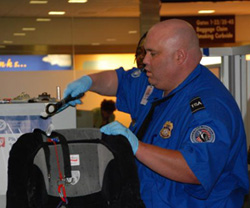Much of the discussion about gun violence revolves around illegal drugs because both are found in abundance in inner-city neighborhoods where a majority of gun homicides occur. And since members of drug gangs are known to carry and use guns to protect their turf or keep a drug deal from going wrong, it’s assumed that we can’t do much about gun violence unless we attack inner-city poverty and joblessness that creates the environment in which drugs flourish and guns are kept ready at hand.
I’m beginning to wonder if there’s any truth to this argument at all. To be sure, drugs play a role in many gun homicides; after robberies it’s the single, largest category of felony circumstances in which murders with a firearm occurs. But I’m not thinking so much of circumstances as I am thinking about causality, in particular the alleged connection between poverty, drugs and guns.
In 1995 Professor Michael Porter of Harvard published a seminal article on returning inner cities to market competitiveness. Noting that most anti-poverty programs address social, but not economic issues, he argued that many inner cities possessed advantages which were true engines of economic growth. These advantages are: 1. Strategic Location – Inner-city neighborhoods are often located nearby major business and residential centers. 2. Local Market Demand – Inner-cities have high population density and thus strong demand for consumer goods. 3. Regional Cluster Integration – Inner cities often connect to nearby clusters of related companies that are competitive nationally or globally. 4. Human Resources – Inner cities contain large numbers of employable people who might trade off less than maximum wages in order to secure a job.
In this and subsequent articles, Professor Porter and his Harvard colleagues wrap this model around a dynamic agenda to invigorate inner cities through a combination of private-sector investment and public sector cooperation. But rather than argue for something that is still largely a theoretical model, we should take a look at an economic success story of the inner city which has been utilizing Professor Porter’s model long before he ever dreamed it up.
I’m referring, of course, to the illegal drug market, what in polite terms we refer to as ‘controlled substances,’ which generates some $70 billion in revenues each year, most of which comes from street transactions in the inner cities. Until 1906, opiates as they were called were unregulated, but a combination of Progressive reformism and pressure from the expanding pharmaceutical industry (and medical profession) pushed the Federal government into regulating and gradually criminalizing addictive drugs.
The watershed moment took place in 1971 when Nixon declared “war” on drugs, efforts were expanded under Reagan and again under Clinton, resulting largely in more men behind bars and more drugs out in the street. The United States, which has always been by far the largest consumer of addictive substances, supports both a substantial retail market at home as well as a global network of manufacturers and suppliers abroad.
When it comes to understanding how the drug market operates in our inner cities, Professor Porter’s model couldn’t be a better fit. As regards strategic location, for every dollar that ghetto residents spend on drugs, middle-class buyers spend twice as much or more, easily driving through a nearby poor neighborhood in order to score. It goes without saying that local demand plays an important role in inner-city drug markets and dealers have no trouble integrating themselves to regional clusters in order to maintain their supply. Finally, the ghetto gangs provide the human resources that dealers use to sell and deliver the goods.
What role do guns play in all this? According to the research of Lizotte and others, guns are a necessary tool of the trade, so to speak, and begin to appear in the hands of gang members for protection in their adolescent years and then to enforce drug deals or protect turf as they move into their mid-20s and become sellers and distributors of drugs.
If drugs are a response to poverty, then it seems to me that it’s a very rational response operating along normal market lines. In which case gun violence that accompanies the drug trade shouldn’t be seen as a manifestation of violence growing out of hopelessness but rather as an efficient mechanism required to enforce market rules. After all, drugs are illegal, so you can’t just walk into small claims court when the guy doesn’t show up with the dough.
Related articles
- Gun violence grows out of drugs, poverty, local leaders say (pennlive.com)
- Poverty Started by the Drug War Creates Cycles of Violence and Crime in Urban Neighborhoods (blackchristiannews.com)









Recent Comments